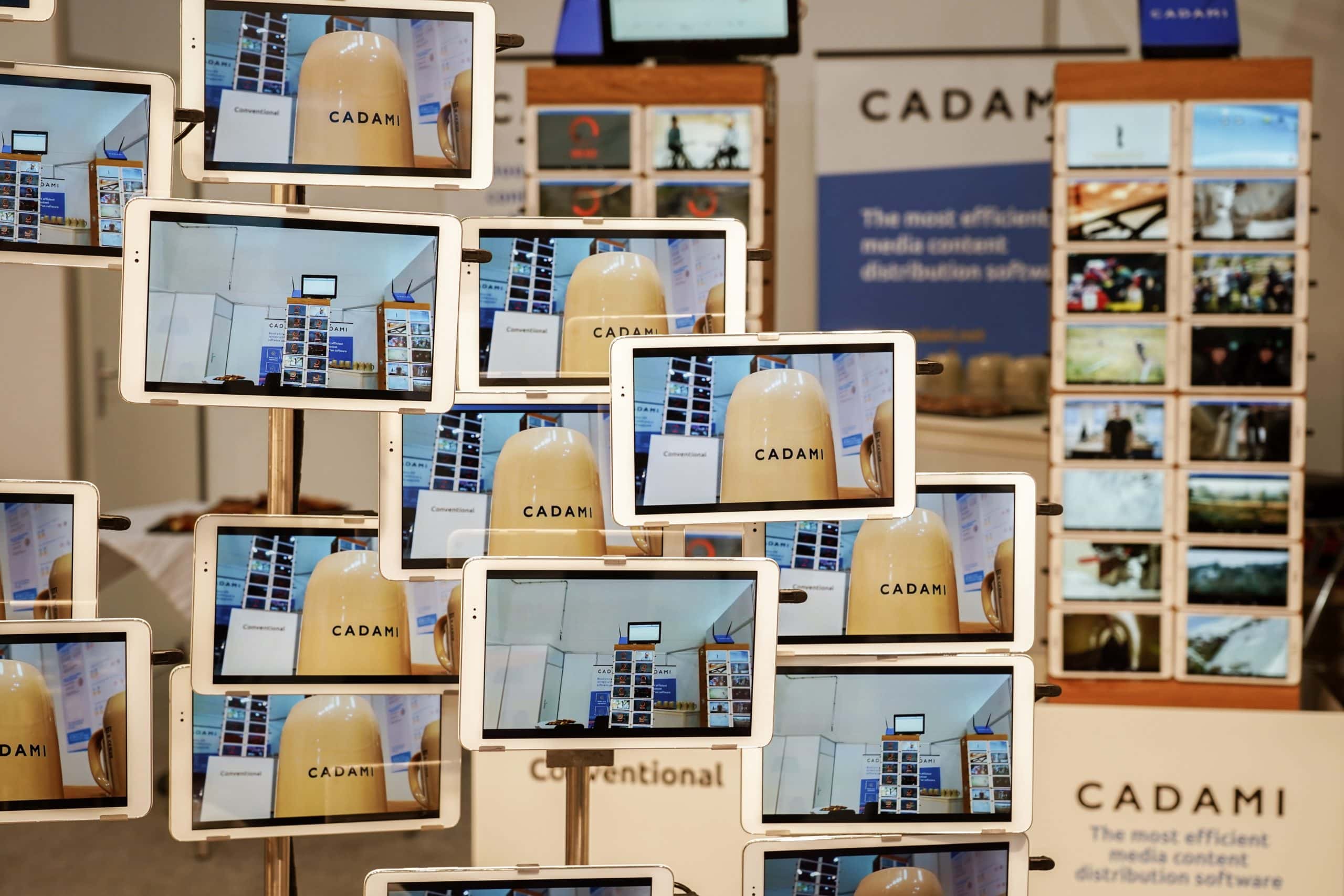Cadami and aeroFi Combine Coded Caching and Li-Fi for Streaming
Share

Software company Cadami and connectivity innovator aeroLiFi introduced new tech at Aircraft Interiors Expo (AIX) that promises to give passengers an in-flight entertainment experience they won’t soon forget.
No one ever remembers the time their in-flight movie went off without a hitch. However, the same can’t be said for when playback is interrupted by the dreaded spinning wheel. Wireless content delivery systems like iPads or WiFi-enabled seatback screens are particular susceptible. That’s because in-flight WiFi doesn’t have the bandwidth to handle the simultaneous demand for the latest Hollywood blockbuster. High-quality streaming IFE over an airplane’s wireless network has simply not been viable before, says Thomas Kuehn, co-founder of software solutions company Cadami.

The Munich-based firm’s new Wi-Fi solution, which premiered at AIX, is flipping that narrative. Cadami’s efficient coded caching technology, a patented combination of the latest coded caching and advanced transmission techniques, can increase bandwidth fivefold. Coded caching breaks content into tiny chunks, which are stored throughout the network, and then intelligently combined, transmitted and decoded upon request or when a passenger hits play.
That means airlines can make a library of high-definition video content available over Wi-Fi to every passenger without jeopardizing quality and reliability, Kuehn says. Cadami’s technology already flies on over 200 aircraft but through cabled networks. The Wi-Fi solution is cheaper to install and maintain, not to mention lighter, than the wired environment, he adds. It can work with a passenger’s device or WiFi-enabled seatback screens.
Wi-Fi that brings the Netflix streaming experience to the cabin is something we can all get behind. But what about an option that does away with those electrosmog-causing radio waves? German company aeroLiFi is out to prove that Li-Fi, which uses both the visible and invisible, or infrared, light emitted by LEDs to transmit data, is the next frontier for in-flight connectivity.
“Li-Fi provides a stable communications link that doesn’t degrade and that has enough capacity for each passenger to stream HD and 4K content,” says Birger Timm, aeroLiFi’s managing director. They demonstrated this capacity by streaming video to multiple screens over Li-Fi at AIX.
But block the signal and the connection is severed. To prevent this from impacting the passenger experience aeroLiFi uses Cadami’s coding caching to store content.
Though it seems like Li-Fi would require a complete overhaul of an aircraft’s systems, Timm says that it’s actually ideal for the aircraft cabin. “It requires minimal physical infrastructure.” Just the server and backbone, with LED lights to transmit and receive data, he says.


